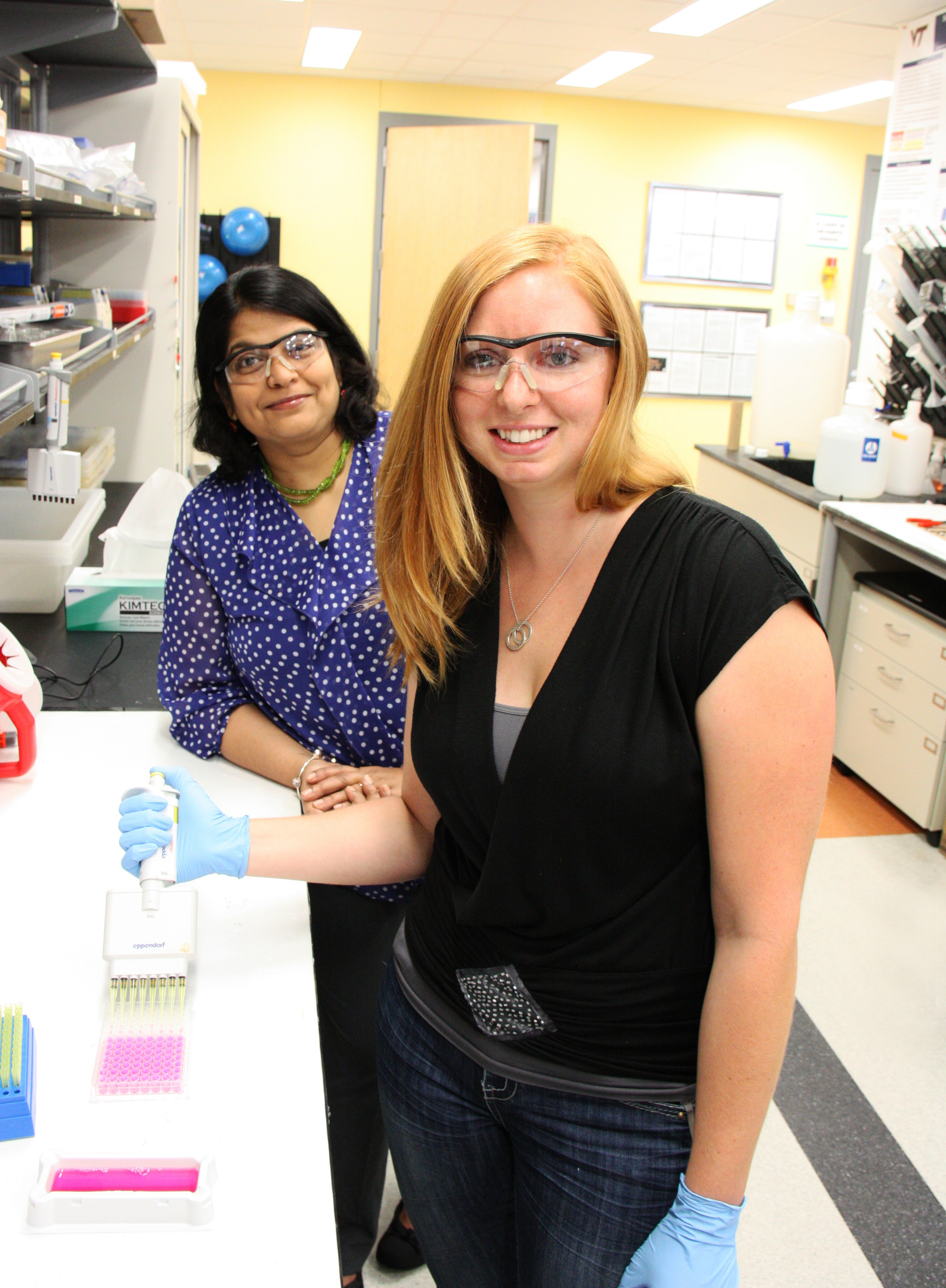Department of Defense awards SMART Fellowship to biomedical engineering student

Rebekah Less of Cable, Wisconsin., a first-year Ph.D. student in the Virginia Tech — Wake Forest University School of Biomedical Engineering and Sciences, has been awarded a Science, Mathematics, and Research for Transformation (SMART) graduate fellowship from the Department of Defense.
The scholarship is extremely competitive, awarded to only 6 percent of total applicants, and aims to increase the number of civilian scientists and engineers working in Department of Defense laboratories. Awardees receive a full scholarship, a stipend, and guaranteed employment after they complete their degrees, as well as summer internships at sponsoring facilities throughout the course of their doctoral studies.
Less had developed an interest in mechanics while growing up on a farm, and had once considered becoming a professional motocross racer. But she wanted to help people with debilitating illnesses — a passion that arose from a youthful trip to her mother's lab at Medtronic, a medical technology company that creates new therapies.
So she turned toward biomedical engineering.
Less was selected for the fellowship based on her work in the Computational Tissue Engineering Graduate Education Program, integrating liver and gastrointestinal tissues.
Working closely with her advisor, Padma Rajagopalan, an associate professor in the Department of Chemical Engineering and the Institute for Critical Technology and Applied Science’s Center for Systems Biology of Engineered Tissues, Less aims to provide fundamental insights into drug metabolism that will lead to comprehensive information on drug-tissue interactions.
“The current models of testing drug metabolism are very simplistic and do not take into account the complex interactions between different cell types within an organ. Using in vivo models, they first test for absorption and then conduct a separate test for toxicity,” Less said. “This disconnected approach leads to frequent drug recalls, often due to toxic effects on the liver that were not seen in initial studies.”
By creating an in vitro system that connects liver and gastrointestinal tissues just like they are connected in our bodies, Less has found a way to integrate the tests into a single process.
“This way, the cells can communicate, and provide the intercellular/inter-organ interaction that occurs in our bodies,” Less said.
Less will focus on integrating primary intestinal cells with 3-D organotypic liver models developed in the Rajagopalan group. This will expose cells to signaling molecules, flow, and transport. Together, these approaches will make significant strides in predicting drug absorption and metabolism.
“Integrating tissues will have a significant impact on understanding physiological processes and I am very hopeful about the impact these studies will have,” said Rajagopalan.
Rajagopalan and Less have recently begun a collaboration with Carla Finkelstein, an associate professor in the Department of Biological Sciences, to focus on exposing the liver models to metastatic colon cells to determine how these cells may form tumors in the liver, and whether they also lead to liver carcinomas.
Originally set on a career in motocross racing, Less is more than meets the eye. Racing her way to become the third best in the nation, she was ready to make a career of the sport when her mother encouraged her to go to college. Less was hesitant, but “two concussions later, I had to agree with her,” she said.
Less strongly considered majoring in mechanical engineering. Hailing from the University of Minnesota, Less was raised on a large farm in northern Wisconsin. Growing up surrounded by farm machinery, she was able to take apart and rebuild an engine by the age of 12. But her love for challenges compelled her to study something that she didn’t understand.
“That is when my mom decided to let me visit her lab at Medtronic,” she said. “After seeing scientists and engineers side by side, creating medical devices and saving lives, I was hooked.”
And mom was happy.








